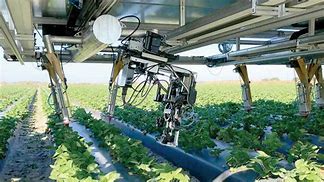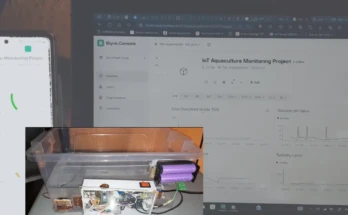Introduction
Agriculture has been the backbone of human civilization for thousands of years. Over the centuries, farming methods have evolved, with technological advancements bringing new ways to improve efficiency and productivity. One of the most promising innovations in recent years is the rise of AI-powered harvesting robots. These intelligent machines are transforming the way crops are harvested, offering a solution to labor shortages, reducing waste, and improving the overall sustainability of farming practices.
In this article, we will dive into the world of harvesting robots, exploring how they work, their benefits, challenges, and the future of agriculture with robotics. We will discuss the various types of robots available, the technology behind them, and how they are reshaping the agricultural industry. So, let’s explore how these robots are changing the farming landscape.

The Need for AI-Powered Harvesting Robots
Labor Shortage in Agriculture
Agriculture has long relied on manual labor to harvest crops. However, with the global population steadily increasing, the demand for food is higher than ever. Unfortunately, the agricultural workforce has been shrinking, with fewer people willing to work in the fields, particularly in rural areas. This labor shortage is one of the key drivers behind the development of the robots. These robots can work tirelessly, reducing the reliance on human labor and addressing the challenges posed by a shrinking workforce.
Growing Demand for Efficiency
As the world’s population continues to rise, there is a pressing need to produce more food in a sustainable manner. Traditional farming methods, though effective, are often inefficient and prone to errors. Harvesting robots, powered by artificial intelligence, offer the potential to streamline the harvesting process, reduce waste, and increase yields.
Sustainability and Environmental Concerns
With climate change and environmental degradation posing serious challenges to agriculture, there is an increasing focus on sustainable farming practices. The robots help reduce the environmental impact of farming in several ways. They minimize the need for excessive pesticide use, optimize the use of water and fertilizers, and reduce soil compaction caused by heavy machinery.

How AI-Powered Harvesting Robots Work
Advanced Sensors and Cameras
AI-powered harvesting robots are equipped with advanced sensors and cameras that allow them to “see” and “understand” the crops they are harvesting. These sensors can detect various factors such as the size, color, and ripeness of fruits or vegetables. By analyzing this data in real time, the robots can make informed decisions about when and how to harvest a particular crop, ensuring that only ripe and healthy produce is picked.
Machine Learning and Computer Vision
One of the key technologies behind AI-powered harvesting robots is machine learning. Over time, as the robot interacts with crops, it continuously improves its ability to make accurate decisions based on the data it collects. This process of continuous learning allows the robots to adapt to different environments and crops, making them versatile tools for a wide range of farming applications.
Computer vision is another essential technology used in this robots. It enables the robots to identify objects, analyze their shapes, and perform tasks such as picking, sorting, and packaging with high precision. By using computer vision, robots can ensure that only the best-quality crops are harvested and avoid damaging delicate fruits or vegetables.
Types of AI-Powered Harvesting Robots
Fruit Harvesting Robots
Fruit harvesting robots are designed to pick a wide range of fruits, including apples, strawberries, oranges, and grapes. These robots use a combination of sensors, cameras, and robotic arms to identify and harvest ripe fruits. For example, robots like Octinion’s Ruby, a strawberry-picking robot, use advanced soft-touch grippers to carefully pluck strawberries from the plant without damaging them.
By automating the harvesting process, these robots reduce the need for human labor, minimize crop damage, and increase overall efficiency.
Vegetable Harvesting Robots
In addition to fruit harvesting, there are AI-powered robots specifically designed to harvest vegetables like lettuce, tomatoes, and cucumbers. These robots often rely on vision systems and machine learning algorithms to identify when the vegetables are ready to be harvested
Weeding and Thinning Robots
These robots can navigate fields with great precision, using computer vision and machine learning to identify weeds and remove them without damaging the crops.
Benefits of AI-Powered Harvesting Robots
Increased Efficiency
AI-powered harvesting robots can work faster and more consistently than human laborers, resulting in higher efficiency and reduced labor costs. These robots can operate around the clock, enabling farmers to harvest crops at the ideal time for maximum yield and quality.
Improved Crop Quality
By accurately identifying ripe crops and harvesting them at the right time, AI-powered robots can improve the overall quality of the produce. With robots, farmers can ensure that only the best-quality produce reaches the market.
Cost Savings
While the initial investment in AI-powered harvesting robots can be high, they offer long-term cost savings. Robots reduce the need for manual labor, lower the risk of crop damage, and optimize the harvesting process. As a result, farmers can reduce waste, increase yields, and improve their bottom line.
Challenges Facing AI-Powered Harvesting Robots
High Initial Investment
One of the main challenges with AI-powered harvesting robots is the high initial cost. While the technology offers long-term benefits, the upfront investment can be a barrier for many small and medium-sized farms. However, as technology advances and becomes more affordable, these robots will likely become accessible to a broader range of farmers.

Limited Adaptability to Different Crops
Although AI-powered robots are becoming more versatile, there are still challenges in adapting them to different types of crops and environments. For example, harvesting delicate crops like grapes or raspberries requires advanced robotics and precision, which can be difficult to achieve with current technology.
Technological and Operational Hurdles
Robotics and AI require ongoing maintenance and updates. Any issues with sensors, software, or mechanical components can disrupt operations, leading to costly downtime. Farmers will need to ensure they have the necessary support and infrastructure to keep these robots running smoothly.
The Future of AI-Powered Harvesting Robots
The future of these harvesting robots looks promising. As artificial intelligence, robotics, and machine learning continue to evolve, these robots will become even more efficient, adaptable, and affordable. In the future, we can expect AI-powered robots to play an even larger role in agriculture, helping farmers produce more food with fewer resources.
With the growing focus on sustainability, automation, and precision farming, AI-powered robots will become an essential tool in the fight against climate change and global food insecurity. The integration of robotics into agriculture will help ensure that farmers can continue to meet the increasing demand for food while minimizing the impact on the environment.
Conclusion
AI-powered harvesting robots are transforming the world of agriculture, offering numerous benefits to farmers and the environment. With their ability to increase efficiency, reduce labor costs, and improve crop quality, these robots are helping farmers adapt to the changing demands of the global food system.
Meta Description:
AI-powered harvesting robots are revolutionizing agriculture by increasing efficiency, improving crop quality, and reducing labor costs. Discover the future of farming with robotics.
FAQs
1. How do AI-powered harvesting robots work?
These robots use sensors, cameras, and machine learning algorithms to identify and harvest crops. They can determine the optimal time for harvesting based on factors like ripeness and quality.
2. What crops can AI-powered robots harvest?
AI-powered robots can harvest a variety of crops, including fruits like apples, strawberries, and grapes, as well as vegetables like lettuce, tomatoes, and cucumbers.
3. What are the benefits of using AI in agriculture?
AI in agriculture offers benefits such as increased efficiency, improved crop quality, reduced environmental impact, and cost savings by minimizing the need for manual labor.
4. What are the challenges of these robots?
Challenges include high initial costs, limited adaptability to different crops, and the need for ongoing maintenance and updates to the technology.
5. What is the future of AI in agriculture?
The future of AI in agriculture looks promising, with ongoing advancements in robotics and machine learning making it possible for robots to become more efficient, adaptable, and affordable.


